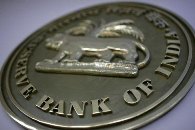 Last Tuesday, when the Reserve Bank of India (RBI) signalled hiked reverse repo, repo and cash reserve ratio (CRR) by 25 basis points, many investors would have wondered what it means for them.
Last Tuesday, when the Reserve Bank of India (RBI) signalled hiked reverse repo, repo and cash reserve ratio (CRR) by 25 basis points, many investors would have wondered what it means for them.
Every quarter, newspapers and television channels dedicate a lot of space to credit policies whereby policy statements are analysed by experts. There are terms like 'dovish' (meaning not so aggressive, in terms of rising interest rates) and 'hawkish' (meaning favouring an increase in interest rates) that can confuse many.
The meaning of these terms and understanding of key policy rates is important because it can directly impact other rates like, interest rate on home and personal loans. Also, returns from debt instrument can improve or reduce. Here's some help in decoding the impact of these key rates.
Cash reserve ratio (CRR): This is the percentage of cash deposits that banks have to maintain with RBI. An increase in CRR means that banks have to park more money with the central bank. This sucks out the liquidity in the banking system. As a result, banks have lesser money with them to lend. This could lead to higher interest rate if there isn't enough liquidity in the system.
When the RBI hiked CRR by 75 basis points in January, Rs 36,000 crore (Rs 360 billion) was absorbed from the system. And last week's hike will remove about Rs 12,500 crore (Rs 125 billion) of excess liquidity.
KVS Manian, group head (retail liabilities and branch banking), Kotak Mahindra Bank said, "For the banks, the cost of funds increases because they have to keep more money for negligible returns on it. So, they pass on the cost to the customers and hike lending rates." In other words, this number has a direct impact on your interest payout.
On the contrary, during the 2008 slowdown, RBI slashed CRR frequently to infuse liquidity into the financial system. Rates, therefore, slipped because of the excess liquidity.
Repurchase or repo rate: This is the rate of interest at which the RBI lends money to banks. In other words, it is the apex bank's lending rate to other banks. A cut in repo rate is good news for banks, as they can borrow more at low cost.
Since, RBI raises its lending rate for banks, the cost of funds for banks go up. Consequently, they lend at high rates as well.
Reverse repo rate: This is the rate at which RBI borrows funds from banks, opposite of repo rate. In other words, this is RBI's borrowing rate. An increase in reverse repo rate is positive for banks because they earn higher returns by lending to RBI.
If RBI slashes its borrowing rate, banks lend at a lower rate. Also, deposit rates go down.
Moses Harding, head (global markets), IndusInd Bank said, "When the market is good for borrowers, it is not very lucrative for depositors and vice versa."
The change in policy rate (repo and reverse repo rates) has an indirect impact on consumers because the lending and borrowing rates of RBI impact the banks. But it is also a signal whether lending and borrowing rates will go up.
And this happens through change in the prime lending rates (PLR) of banks. "When PLR will be replaced by the base rate from July, any change in policy rates will impact the base rate," said Manian.
Statutory liquidity ratio (SLR): This rate is another determinant of lending rates. Every bank has to keep an assured amount of funds in some form or the other (cash, gold, government bonds, etc) before lending to customers.
This measure controls bank's credit expansion and can lead to higher interest rates. In the October 2009 Credit Policy, RBI had hiked the SLR by 100 basis points - from 24 to 25 per cent.The overall impact or hike or reduction in the CRR, reverse repo and repo, like this time, lead to a rise or fall in the interest rates, depending on the quantum.
For instance, the impact of a rise in all three this time is being interpreted as a moderate measure. "It will not call for immediate, appreciable rise in interest rates," added Harding.







 © 2025
© 2025